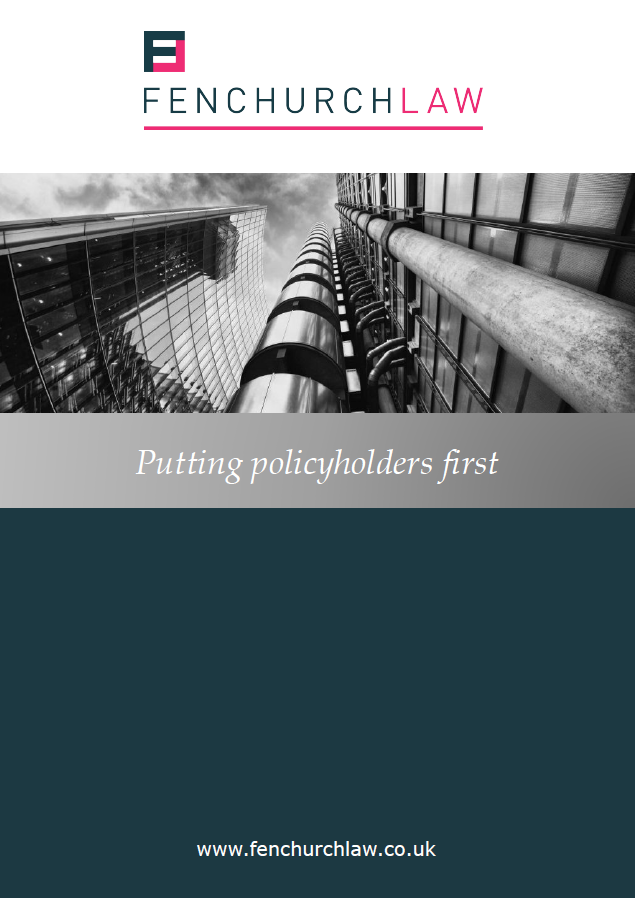
No clear mistake and no clear cure – disappointing result in the Court of Appeal for W&I policyholder
A recent decision of the Court of Appeal, Project Angel Bidco Ltd (In Administration) v Axis Managing Agency Ltd & Ors [2024] EWCA Civ 446, provides guidance in relation to the interpretation of exclusion clauses and alleged drafting errors in warranty and indemnity (“W&I”) policies.
Background
The Parties
The Appellant, Project Angel Bidco Ltd (“PABL”), was insured under a W&I policy (“the Policy”).
PABL had purchased the shares in Knowsley Contractors Limited (trading as King Construction) (“King”). The Share and Purchase Agreement (“SPA”) included a number of warranties, listed in a Cover Spreadsheet to the Policy, including in relation to anti-corruption legislation.
King in fact became embroiled in allegations of corruption. It went into liquidation and PABL itself went into administration. PABL had paid £16.65 million for the shares. It claimed that the warranties had been incorrect, such that the true value of the shares was negligible or at most £5.2 million, and accordingly made a claim against the Respondents, Axis Managing Agency Limited and others (“Insurers”), for an indemnity under the Policy.
The Cover Spreadsheet
The Cover Spreadsheet contained a list of “Insured Obligations” which included warranties 13.5 (a) to (h) (“Warranty 13.5”). The spreadsheet contained the following rubric:
“Notwithstanding that a particular Insured Obligation is marked as “Covered” or “Partially Covered”, certain Loss arising from a Breach of such Insured Obligation may be excluded from cover pursuant to Clause 5 of the Policy.”
The Insured Obligations at Warranty 13.5 were all marked as “Covered”.
ABC Liability
The Policy stated that:
“The Underwriters shall not be liable to pay any Loss to the extent that it arises out of…
5.2.15. any ABC Liability” (“the ABC Liability Exclusion”).
ABC Liability was defined as “any liability or actual or alleged non-compliance by any member of the Target Group or any agent, affiliate or other third party in respect of Anti-Bribery and Anti-Corruption Laws”. [Emphasis added.]
The Overarching Issue
This appeal was concerned with the conflict between the “Covered” Insured Obligations at Warranty 13.5 and the ABC Liability Exclusion.
PABL argued that the scope of the Insured Obligations at Warranty 13.5 contradicted the ABC Liability Exclusion, as no loss arising out of a breach of Warranty 13.5 would ever be covered by the Policy. The Court explored the alleged conflict by asking four questions:
- Was there an inconsistency as alleged by PABL?
- If there was inconsistency, did the Policy resolve it?
- Was there something wrong with the language of the ABC Liability Exclusion?
- If a mistake had been made, was there a clear cure?
Was there an inconsistency?
Insurers argued that Warranty 13.5(e) (that the company maintained a record of all entertainment, hospitality and gifts received from a third party) and 13.5(h) (in relation to the award of contracts under the Public Contracts Regulations 2006) fell outside the exclusion. However, the Court of Appeal accepted there was a conflict between the entirety of Warranty 13.5 and the ABC Liability Exclusion.
Did the Policy resolve the inconsistency?
Insurers argued the structure of the Policy meant that the Cover Spreadsheet was subordinate to the ABC Liability Exclusion. This relegated the Cover Spreadsheet to being a “summary document”, purely intended to show which warranties were in scope of the Policy. The Court of Appeal disagreed, noting that the definition of “Insured Obligations” was linked to the Cover Spreadsheet.
Secondly, Insurers argued that the ABC Liability Exclusion was a heavily negotiated term and therefore more significant than the Cover Spreadsheet. The Court of Appeal accepted this, since the definition of ABC Liability was “detailed and wide ranging”, whereas the classification of warranties as “Covered”, “Excluded” or Partially Covered” was much broader.
Thirdly, Insurers argued the rubric in the Cover Spreadsheet showed that the ABC Liability Exclusion would take precedence, and the Court of Appeal agreed.
Was there something wrong with the language?
The Court of Appeal emphasised that, in order to correct an alleged error in a contract, it has to be clear there has been a mistake. In the first instance decision, the Judge had interpreted the ABC Liability Exclusion as follows:
“As drafted the definition would appear to cover three different species of ABC liability being:
- i) Any liability … in respect of Anti-Bribery and Anti-Corruption Laws;
- ii) Any … alleged non-compliance by any member of the Target Group or any agent, affiliate or other third party in respect of Anti-Bribery and Anti-Corruption Laws; and
iii) Any … actual … non-compliance by any member of the Target Group or any agent, affiliate or other third party in respect of Anti-Bribery and Anti-Corruption Laws.”
PABL objected to this interpretation on the grounds that a reasonable reader would expect the word “liability” to be used in the sense of liability “for” something, suggesting that the word “or” had been included by mistake and the ABC Liability definition should be interpreted as “any liability [f]or actual or alleged non-compliance …”.
The Court of Appeal concluded that, although liability would often be referred to in the context of responsibility “for” something, it would not be unusual to refer to liability “in respect of”, “arising from” or “in connection with” an excluded peril. Therefore, despite the apparent contradiction, there was nothing wrong with the language of the ABC Liability Exclusion and no drafting error could be established.
Was there an obvious cure?
For completeness, the Court of Appeal went on to consider whether there was a “clear cure” for the alleged mistake. Assuming that there was a contradiction between the ABC Liability Exclusion and Warranty 13.5 because of a drafting mistake, Insurers had a coherent and rational reason for wanting to avoid liability for loss arising out of ABC Liability, and it was unclear whether any supposed error was in the drafting of the ABC Liability exclusion or the Cover Spreadsheet. It was held therefore that no clear cure existed for the alleged mistake.
The Decision
In summary, the Court of Appeal by majority (Lewison LJ, with whom Arnold LJ agreed) found in favour of Insurers and the appeal was dismissed.
In a dissenting judgment, Phillips LJ found in favour of PABL, concluding that there was a “fundamental inconsistency” between the ABC Liability Exclusion and Warranty 13.5. This was highlighted by the fact that the Policy exclusion did not define “liability” and losses arising from non-compliance were excluded.
Impact on policyholders
The decision illustrates the importance of careful drafting of policy wordings to avoid ambiguity, with particular attention to the interaction of potentially overlapping insured and excluded perils. The scope of coverage may be significantly impacted by minimal changes to punctuation or connecting words.
The English Courts are likely to uphold the literal effect of contract terms even in the face of apparent inconsistency, in the absence of compelling evidence for a clear cure in respect of an obvious drafting error.
Ayo Babatunde is an Associate at Fenchurch Law
Other news
Timing is everything – Makin v QBE and the cost of not complying with a condition precedent
3 July 2025
This recent decision from the High Court provides a powerful reminder of the consequences of not complying with a…
You may also be interested in:
Archives
Categories
- The Good, the Bad and the Ugly
- Fenchurch Law Webinars
- Stonegate
- Newsletter
- Events
- Webinars
- Comparing German and English Insurance Law – A Series
- Construction Risks
- Operations
- Business Development
- Construction & Property Risks
- News
- International Risks
- Legislation
- Financial & Professional Risks
- Case Law
- Professional Risks
- Press Release
- Uncategorized



